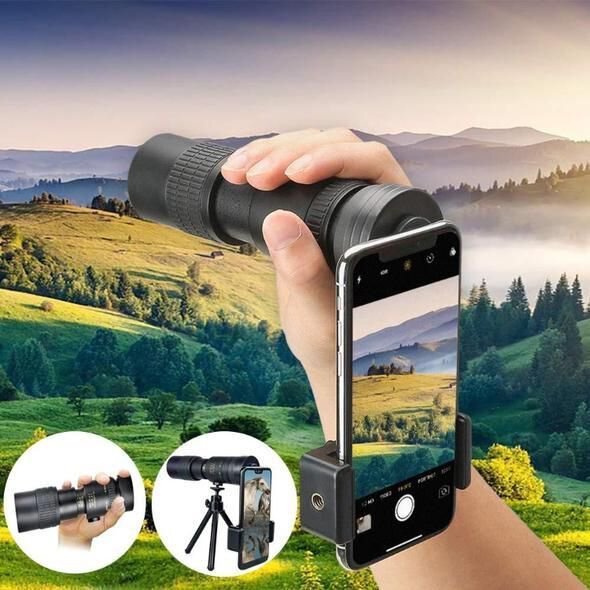

Most will allow for sharp internal focus with the central focusing knob. Be aware that some monoculars may not offer enough correction if they offer it at all. This allows for some correction for near and far-sighted people and can help to make tight eye relief a non-issue. If the monocular offers a diopter, use it. However, a minimum of 15mm may be tolerable. If you can't wear your sun or prescription glasses with the monocular, you may not have enough eye relief.įorgiving eye relief is around 20 mm and is ideal for those that wear glasses and sunglasses. If you can't see the entire field of view, you may not have enough eye relief. If you're pressing your eyes or the bridge of your nose into the eyepiece, you may not have enough eye relief.

Large monocular - Image Credit: Optics Planet

Short eye relief may create problems for glasses wearers MonocularĤ Multi-Click Positions, snug for glasses wearers. However, flip-up eyecups often offer the best glare and stray light protection benefits.

Flip-up eyecups can be cumbersome but if they work well, they stay down for those that wear glasses. This is unfortunately because eye comfort and relief have a lot to do with the type of eyecup.
#BEST MONOCULAR TELESCOPE FOR PHONE INSTALL#
The type of eyecup or lack of one on your monocular may not seem like a big deal until you try to use it. Because monoculars are small, some manufacturers don't install a retractable eyecup at all. Monocular Glass, Coatings & Prism Type Comparisons Schmidt-Pechan with Dielectric Prism Coatings But given low price points, it's then a matter of personal tolerance and how much it interferes with your application. Many units may struggle with various optical distortions such as the more obvious chromatic aberration (color fringing). This just means a bright and clear sight picture - also determined by the configuration (magnification and aperture). Monoculars worth buying should have nothing less than fully multi-coated optics to improve light transmission through the optical plane. While high-end monoculars are rare, the best will have ED/HD elements, specialized prism coatings, and protective external coatings. There are a lot less moving components and glass elements in a monocular versus scopes and binoculars, but a monocular still requires attention to optical quality. Monocularģ.8 inches (4.13 inches with close-focus lens) However, the most compact monoculars can be as slim as a pen and no longer than your index finger, but many will range around 8 oz in weight and 4-5" in length. These monoculars will offer higher magnification and larger apertures. Larger and heavier monoculars will weigh in around 16 ounces and more, and they can even rival compact spotting scopes in size.
#BEST MONOCULAR TELESCOPE FOR PHONE PORTABLE#
The best monocular will be compact and lightweight. This is their primary benefit as they are excellent portable and handheld devices. This is an excellent feature for hunters and law enforcement/military that need the cover of twilight to observe their targets.Īs far as stargazing goes, the high power is worth the sacrifice in field of view when you have a darker background and increased detail when finding constellations, double stars, and vast galaxies. While I still recommend tripod mounting it for steadiness while stargazing, it’s lightweight and compact size gives it an edge over 10x50 binoculars - it's small enough to be taken along anywhere without much ado. It's a high powered, large aperture unit that can keep you out later as dusk approaches. The 10x50 specs of the Siege monocular provides long-range viewing and long glassing sessions. Firefield is an affordable brand in the night vision world. While the Siege 10x50 isn't a night vision monocular, it is an optic that I say would be a great for stargazing. Though it's a monocular that's not well-known, I recognize the quality and benefits it brings to the field and open skies.


 0 kommentar(er)
0 kommentar(er)
